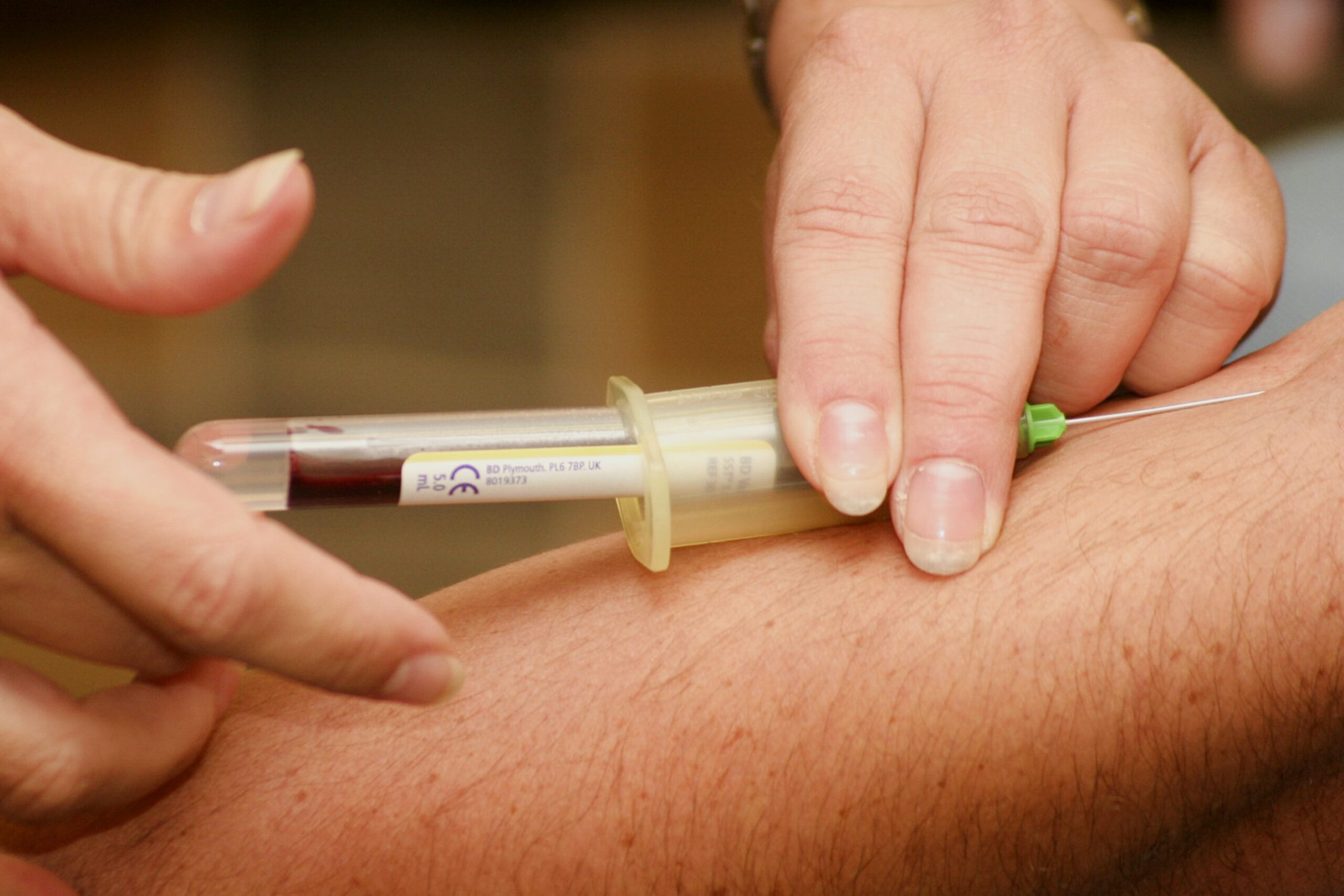Are you experiencing frequent urination, especially during the night? Do you feel like you have to strain to urinate or have a weak urine flow? These could be symptoms of benign prostatic hyperplasia (BPH), a common condition among aging men. BPH occurs when the prostate gland grows in size and starts to press against the urethra, causing urinary problems. In this article, we will explore the various symptoms associated with BPH and provide some insights into managing this condition. So, if you're curious to learn more about the symptoms of BPH and how they can impact your daily life, keep reading!
Understanding Benign Prostatic Hyperplasia
Benign Prostatic Hyperplasia (BPH) is a medical condition that affects the prostate gland, which is a small, walnut-sized gland located below the bladder in men. The prostate gland surrounds the urethra, the tube that carries urine from the bladder out of the body. BPH occurs when the prostate gland grows in size, causing it to press against the urethra and obstruct the flow of urine. While BPH is not a life-threatening condition, it can cause uncomfortable symptoms and may require treatment.
Definition of Benign Prostatic Hyperplasia
Benign Prostatic Hyperplasia, also known as prostate gland enlargement, is a non-cancerous condition characterized by the growth of the prostate gland. As men age, hormonal changes can cause the prostate gland to grow larger, resulting in the compression of the urethra and urinary symptoms. BPH is a common condition, affecting more than half of men over the age of 50 and nearly 90% of men over 80.

Causes Of Benign Prostatic Hyperplasia
The exact cause of BPH is still unknown. However, research suggests that hormonal imbalances, primarily involving the male sex hormone testosterone and the hormone dihydrotestosterone (DHT), play a significant role in the development of BPH. As men age, the levels of testosterone and DHT increase, leading to the enlargement of the prostate gland. Additionally, genetic factors and lifestyle choices, such as obesity and lack of physical activity, may also contribute to the development of BPH.
Common Symptoms of Benign Prostatic Hyperplasia
The symptoms of BPH vary from person to person, but they generally relate to difficulties with urination. Some of the most common symptoms include:
Frequent Urination
One of the primary symptoms of BPH is the need to urinate more frequently. This typically manifests as an increased urge to urinate throughout the day and night, interrupting sleep and causing frustration.
Difficulty Starting Urination
BPH often obstructs the flow of urine by pressing against the urethra. As a result, many men with BPH experience difficulty initiating urination, requiring more time and effort to start the flow of urine.
Weak Urine Stream
Due to the blockage caused by an enlarged prostate, the urinary stream may become weak and less forceful. This can be both uncomfortable and inconvenient, as it may require more time to empty the bladder completely.
Feeling of Incomplete Bladder Emptying
People with BPH may have a persistent feeling that their bladder is not completely empty, even after urination. This sensation can be bothersome and may lead to frequent trips to the bathroom in an attempt to achieve a sense of relief.

Less Common Symptoms of Benign Prostatic Hyperplasia
While the symptoms mentioned earlier are more common, individuals with BPH may also experience less common symptoms, including:
Bladder Stones
Bladder stones can develop in individuals with BPH due to the incomplete emptying of the bladder. These stones can cause discomfort or pain in the lower abdomen, frequent urinary tract infections, and blood in the urine.
Bladder Infections
The obstruction caused by an enlarged prostate can increase the risk of bacterial growth in the bladder. This can result in bladder infections, which may cause symptoms such as pain during urination, cloudy urine, and a strong urge to urinate.
Blood in the Urine (Hematuria)
Hematuria, or blood in the urine, can occur in individuals with BPH. This symptom should always be evaluated by a healthcare professional, as it may also indicate other underlying conditions.
Symptoms Related to Advanced Benign Prostatic Hyperplasia
If left untreated or undiagnosed, BPH can progress and lead to more severe symptoms, including:
Chronic Kidney Diseases
Severe cases of BPH can potentially cause damage to the kidneys. The obstruction of urine flow can lead to increased pressure within the urinary tract, which can negatively affect kidney function over time.
Urinary Retention
Urinary retention occurs when the bladder is unable to empty completely, causing urine to build up. This can lead to discomfort, pain, and a higher risk of urinary tract infections. In some cases, urinary retention may require medical intervention, such as catheterization, to relieve the pressure.

Physical Examination For Benign Prostatic Hyperplasia
When diagnosing BPH, a healthcare professional may conduct specific physical examinations to assess the condition of the prostate gland. Some of the common examinations include:
Digital Rectal Examination
A digital rectal examination (DRE) involves a healthcare professional inserting a gloved finger into the rectum to feel the prostate gland. This examination helps determine the size, shape, and consistency of the prostate and helps the healthcare provider diagnose BPH and other prostate-related conditions.
Prostate Specific Antigen (PSA) Measurement
The prostate-specific antigen (PSA) blood test measures the level of PSA, a protein produced by the prostate gland, in the bloodstream. Elevated PSA levels can indicate the presence of BPH or other prostate conditions. However, PSA levels alone are not sufficient to diagnose BPH, as they can also be elevated in other conditions like prostate cancer.
Diagnostic Tests for Benign Prostatic Hyperplasia
In addition to physical examinations, healthcare professionals may recommend specific diagnostic tests to confirm a diagnosis of BPH. These tests may include:
Transrectal Ultrasonography
Transrectal ultrasonography uses soundwaves to create an image of the prostate gland. This imaging technique allows healthcare professionals to assess the size and condition of the prostate and identify any abnormalities.
Urodynamic Testing
Urodynamic testing involves measuring bladder function and pressure during urination. This test helps determine the extent of urine flow obstruction and assesses bladder capacity and muscle function.
Cystoscopy
Cystoscopy is a procedure in which a slim, flexible tube with a camera called a cystoscope is inserted into the urethra to examine the bladder and urethra. This procedure allows the healthcare professional to visualize any abnormalities or obstructions in the urinary tract.
Complications of Benign Prostatic Hyperplasia
If left untreated, BPH can lead to several complications, including:
Urinary Tract Infections
The urinary tract can be more susceptible to infections when there is incomplete bladder emptying due to BPH. Recurrent urinary tract infections can cause discomfort, pain, and require medical treatment with antibiotics.
Bladder or Kidney Damage
Obstruction caused by an enlarged prostate can put pressure on the bladder, leading to long-term bladder problems such as incontinence and bladder diverticula. Additionally, if urine flow is severely obstructed, it can lead to kidney damage, impairing kidney function.
Incontinence
Incontinence, or the involuntary leakage of urine, can occur in individuals with BPH. This can significantly impact one's quality of life, causing embarrassment and a need for frequent changes of clothing.
Treatment Options for Benign Prostatic Hyperplasia
Treatment options for BPH depend on the severity of symptoms and the impact on an individual's quality of life. Some common treatment options include:
Medication
Medications, such as alpha-blockers and 5-alpha reductase inhibitors, may be prescribed to manage BPH symptoms. These medications work by relaxing the muscles in the prostate and reducing the size of the gland, respectively.
Minimally Invasive Procedures
Minimally invasive procedures, such as transurethral microwave therapy (TUMT) or laser therapy, use heat or laser energy to reduce the size of the prostate and improve urine flow. These procedures are generally performed on an outpatient basis and require minimal recovery time.
Surgery
In more severe cases, surgical intervention may be necessary to treat BPH. Transurethral resection of the prostate (TURP) is a common surgical procedure that involves removing portions of the prostate gland to alleviate symptoms and improve urine flow.
Lifestyle Changes to Manage Benign Prostatic Hyperplasia
In addition to medical treatments, making certain lifestyle changes can help manage the symptoms of BPH. Some recommended lifestyle changes include:
Dietary Changes
Maintaining a healthy diet that includes a variety of fruits, vegetables, whole grains, and lean proteins can have a positive impact on BPH symptoms. Avoiding excessive consumption of caffeine, alcohol, and spicy foods may also be beneficial.
Exercise
Regular physical activity, such as walking, jogging, or cycling, can help manage BPH symptoms. Exercise not only contributes to overall well-being but can also help maintain a healthy weight, which may reduce the risk of BPH progression.
Reducing Stress
Stress and anxiety can worsen BPH symptoms. Engaging in stress-reduction techniques, such as meditation, deep breathing exercises, or participating in hobbies, can help minimize stress and improve overall well-being.
Prevention of Benign Prostatic Hyperplasia
While it is not possible to prevent BPH entirely, certain measures can be taken to potentially reduce the risk or delay its development. These measures include:
Regular Check-ups
Regular visits to a healthcare professional for routine check-ups can help detect early signs of BPH or other prostate conditions. Early detection can pave the way for timely intervention and appropriate management.
Healthy Lifestyle
Maintaining a healthy lifestyle by eating a balanced diet, engaging in regular physical activity, and managing stress can promote overall prostate health. These practices can also help reduce the risk of developing other potential health issues.
Understanding Risk Factors
Being aware of the risk factors associated with BPH, such as age, family history, and hormonal imbalances, can help individuals take proactive steps towards managing their prostate health. Understanding these risk factors can also create opportunities for early detection and intervention.
In conclusion, understanding the symptoms, diagnosis, and treatment options for Benign Prostatic Hyperplasia is crucial in managing this common condition that affects many men as they age. By recognizing the signs, seeking medical attention, and making necessary lifestyle changes, individuals can effectively manage BPH and improve their quality of life. Remember to consult with a healthcare professional for an accurate diagnosis and personalized treatment plan.

